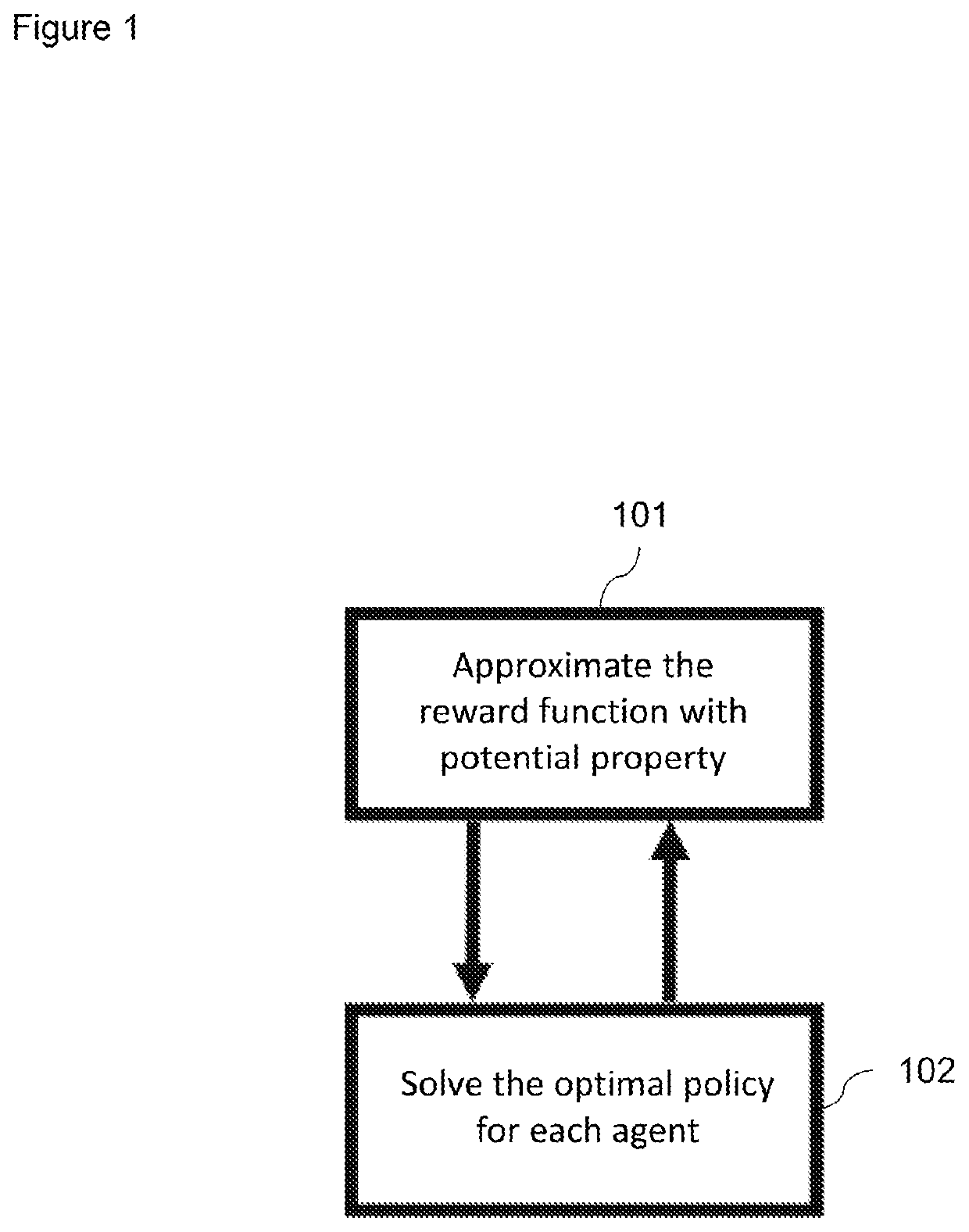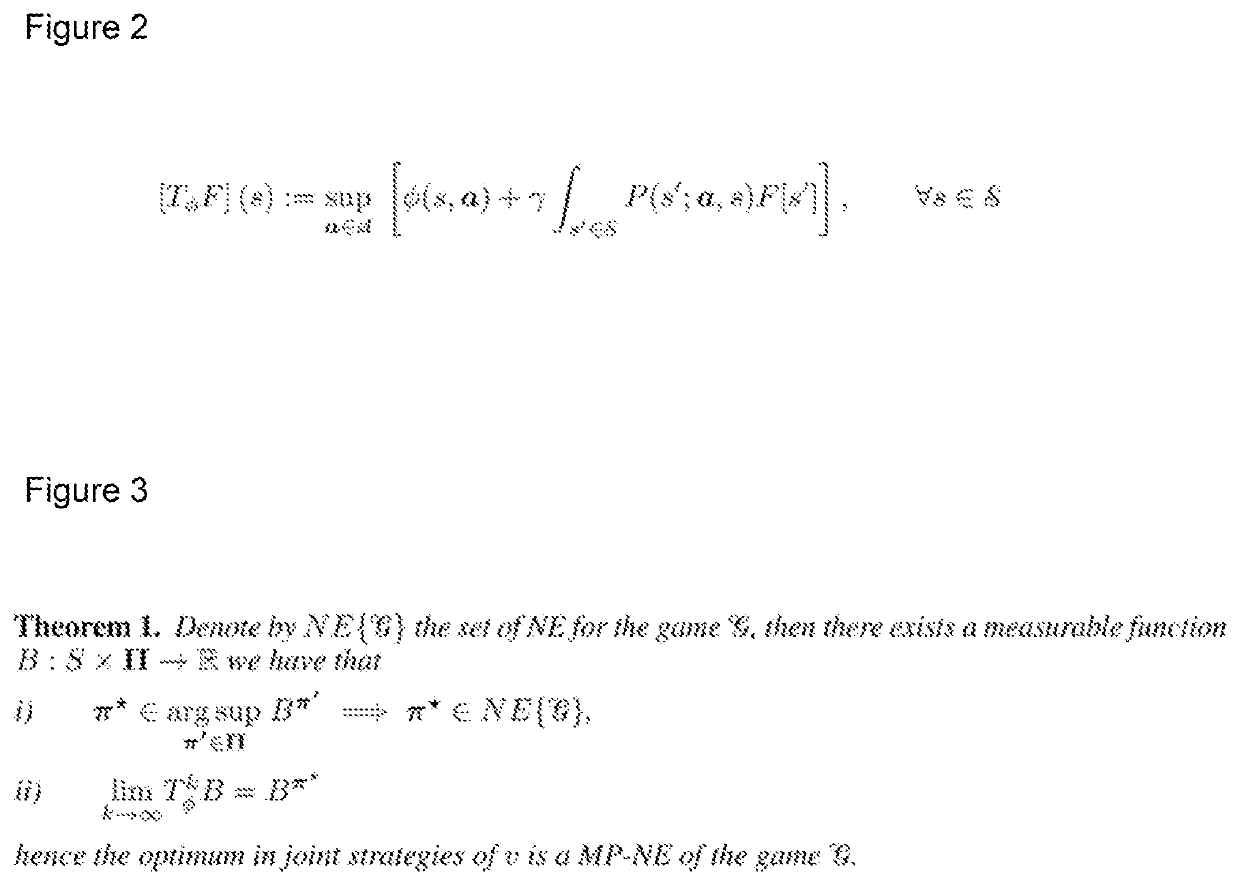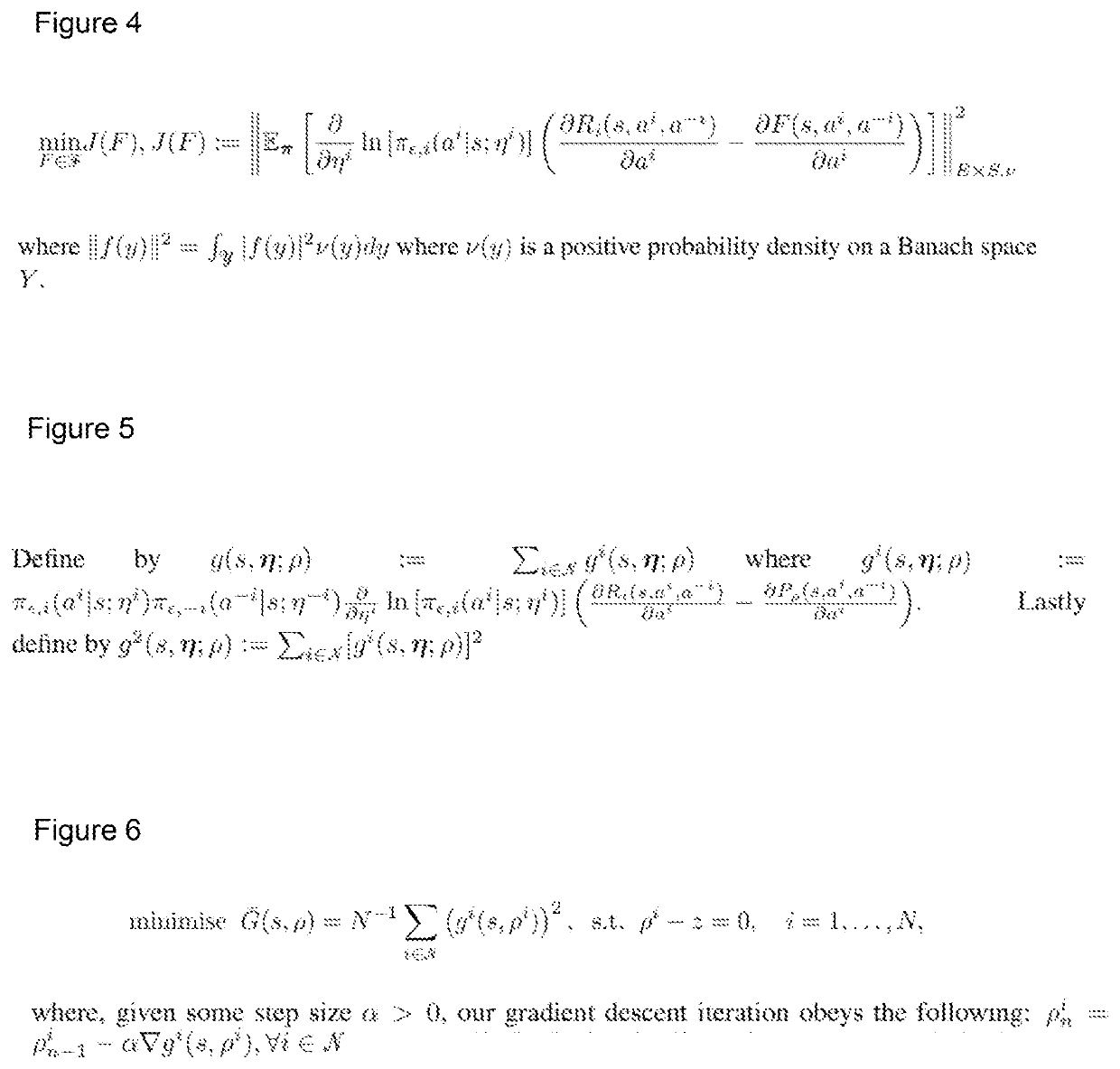Non-zero-sum game system framework with tractable nash equilibrium solution
a game system and non-zero-sum technology, applied in the field of multi-agent machine learning systems, can solve the problems of no agent achieving the best-response action, no agent can improve their payoff, and the task of computing the ne of multi-agent systems that describe real-world scenarios can be challenging, so as to improve the solubility of relationships and improve convergence speed and/or the effect of aggregate function
- Summary
- Abstract
- Description
- Claims
- Application Information
AI Technical Summary
Benefits of technology
Problems solved by technology
Method used
Image
Examples
Embodiment Construction
[0043]Described herein is a computer implemented device and method for application in multi-agent machine learning systems.
[0044]As illustrated in FIG. 1, the approach described herein is a two-step process in the multi-agent system to solve a general-sum multi-player game where a first step (shown at 101) aims to approximate the reward function by learning a single aggregate function (potential function) and a second step (shown at 102) aims to solve the optimal policy for each agent given the learned function.
[0045]In general, the computer-implemented device is configured to process a multi-agent system input to form an at least partially optimised output indicative of an action policy. The device is configured to receive the multi-agent system input, which comprises a definition of a multi-agent system and defines behaviour patterns of a plurality of agents based on system states (for example, if the system state is X, the agent performs the action Y). The behaviour patterns may ...
PUM
 Login to View More
Login to View More Abstract
Description
Claims
Application Information
 Login to View More
Login to View More - R&D
- Intellectual Property
- Life Sciences
- Materials
- Tech Scout
- Unparalleled Data Quality
- Higher Quality Content
- 60% Fewer Hallucinations
Browse by: Latest US Patents, China's latest patents, Technical Efficacy Thesaurus, Application Domain, Technology Topic, Popular Technical Reports.
© 2025 PatSnap. All rights reserved.Legal|Privacy policy|Modern Slavery Act Transparency Statement|Sitemap|About US| Contact US: help@patsnap.com



